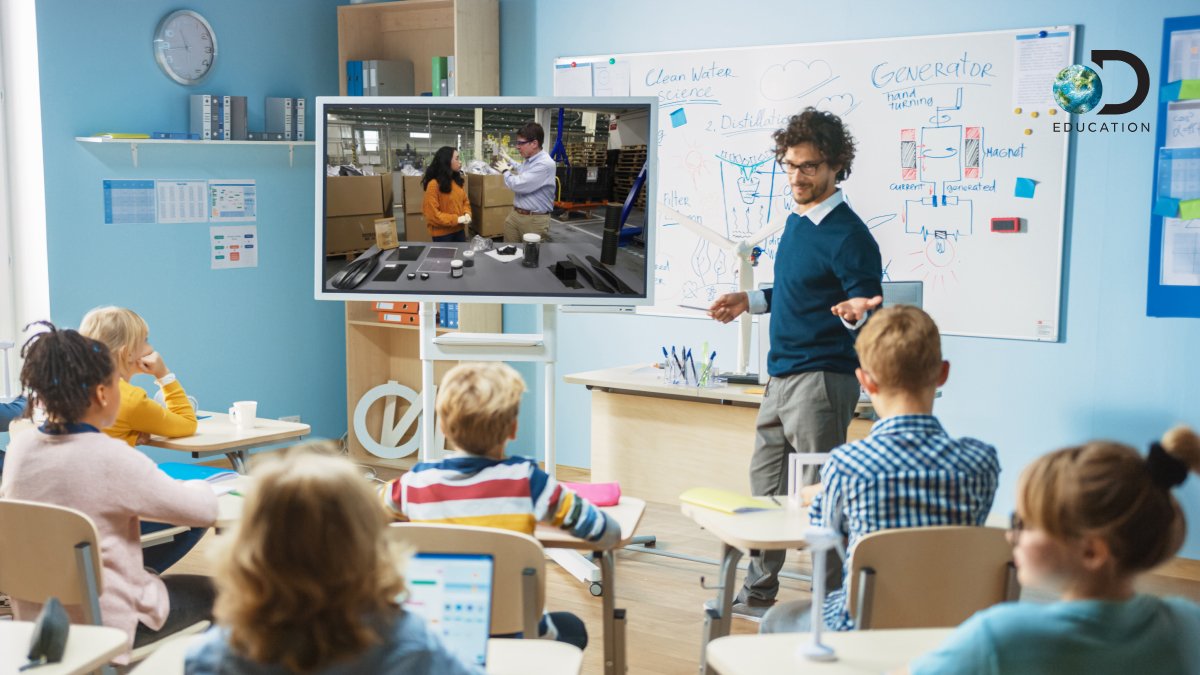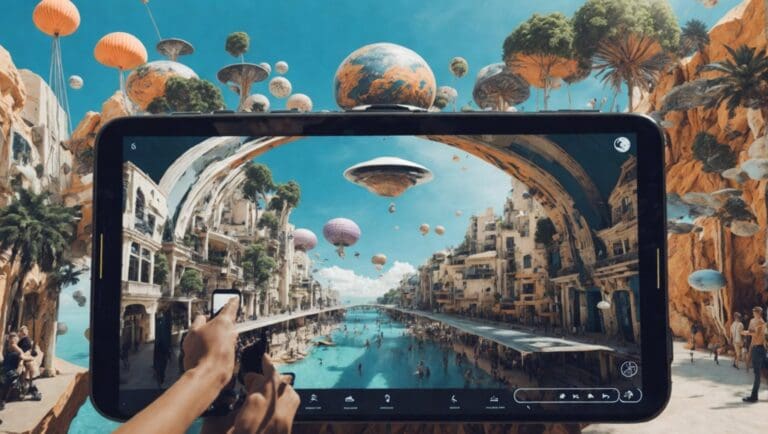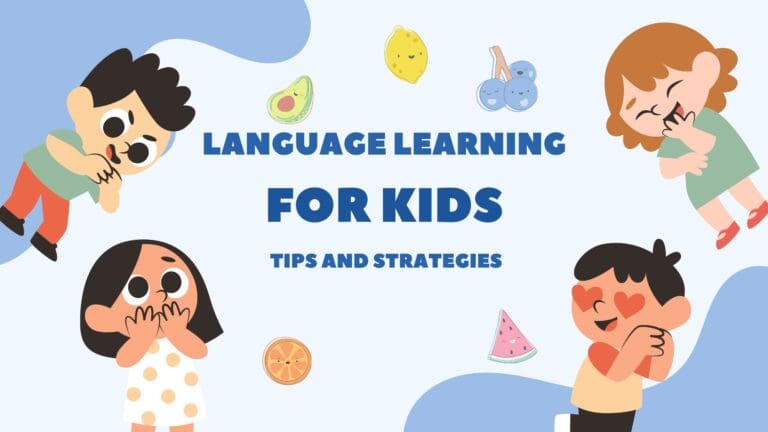Virtual Field Trips: Exploring the World from Your Screen
Are you looking for an innovative way to bring the world to your classroom? Virtual Field Trips might be the solution you’re looking for. Virtual Field Trips are online tours that allow students to explore fascinating destinations without leaving the classroom. These trips are designed to be interactive, engaging, and educational, and they can be an excellent way to supplement your curriculum.
With Virtual Field Trips, you can take your students to places that might otherwise be impossible to visit. The possibilities are endless, from exploring the depths of the ocean to touring ancient ruins. These trips can also be customized to fit your specific needs and interests. Whether you want to focus on history, science, or culture, a Virtual Field Trip is perfect for your classroom. Plus, with the ability to interact with guides and ask questions, students can better understand the places they’re visiting.
What are Virtual Field Trips?
Virtual Field Trips are online educational experiences that allow students to explore different destinations and environments without leaving the classroom. These trips are usually pre-organized collections of images, videos, and information sourced online and presented as a computer-based learning experience. They are usually oriented toward a destination of some sort, either geographical or functional (e.g., a virtual factory tour).
Definition
Virtual Field Trips are a type of technology-enhanced learning that can be used to supplement traditional classroom instruction. They can be accessed from any device with an internet connection, making them a flexible and convenient option for teachers and students. Virtual Field Trips can be designed to cover a wide range of topics, from history and culture to science and nature. They can also be tailored to different age groups and learning levels.
Benefits
Virtual Field Trips offer several benefits for both teachers and students. For teachers, they provide a cost-effective way to enhance classroom instruction and engage students in learning. Virtual Field Trips can also help teachers cover more material in less time, as they can be accessed anytime and from any location.
Virtual Field Trips offer students a unique and immersive learning experience that can help them better understand and retain information. They can also help students develop critical thinking and problem-solving skills, as they are encouraged to explore and interact with the virtual environment. Additionally, Virtual Field Trips can help students develop a sense of curiosity and wonder about the world around them.
Overall, Virtual Field Trips are an innovative and effective way to enhance classroom instruction and engage students in learning. They offer a flexible, convenient, and immersive learning experience that can help students better understand and retain information.
Types of Virtual Field Trips
When it comes to virtual field trips, there are two main types to choose from: live virtual field trips and pre-recorded virtual field trips. Each type has its advantages and disadvantages, so it’s important to consider which will work best for your needs.
Live Virtual Field Trips
Live virtual field trips are exactly what they sound like a live, interactive experience with a guide who takes you on a tour of a location or site. These types of virtual field trips are often conducted through video conferencing platforms like Zoom or Skype and allow for real-time interaction between the guide and the participants.
One of the biggest advantages of live virtual field trips is the ability to ask questions and get immediate answers from the guide. This can help to deepen your understanding of the location or site and provide a more engaging and interactive experience overall. Additionally, live virtual field trips can be customized to fit your specific needs, whether you’re a classroom teacher looking to supplement your curriculum or an individual looking to explore a new location.
Smithsonian National Museum of Natural History: The museum offers captivating virtual tours and field trips, providing in-depth explorations of its extensive collections and fascinating exhibits, covering topics such as dinosaurs, human evolution, and biodiversity.
Google Arts & Culture: Google Arts & Culture collaborates with museums and cultural institutions worldwide, offering virtual tours and exhibits that showcase renowned artworks, historical landmarks, and cultural heritage sites from around the globe.
Discovery Education: Discovery Education provides engaging live virtual field trips that cover a wide range of educational topics, including science, history, and conservation. These interactive experiences are designed to inspire and educate students of all ages.
National Geographic: National Geographic offers captivating live virtual field trips that allow participants to explore diverse ecosystems, encounter wildlife, and learn about cultural heritage from different parts of the world. Experts and explorers lead these virtual journeys.
However, live virtual field trips can also be more difficult to schedule and coordinate than pre-recorded trips, as they require everyone to be available at the same time. They can also be more expensive, as you’ll need to pay for the guide’s time and expertise.
Pre-recorded Virtual Field Trips
Pre-recorded virtual field trips, on the other hand, are tours or videos that have been recorded in advance and can be accessed at any time. These types of virtual field trips are often available online, either for free or for a fee, and can be watched on your own schedule.
One of the biggest advantages of pre-recorded virtual field trips is the flexibility they offer. You can watch them at your own pace, pause and rewind as needed, and revisit them as many times as you like. Additionally, pre-recorded virtual field trips can be less expensive than live trips, as you don’t need to pay for a guide’s time or expertise.
However, pre-recorded virtual field trips can also be less engaging and interactive than live trips, as you won’t have the opportunity to ask questions or interact with a guide in real time. Additionally, the quality of pre-recorded virtual field trips can vary widely, so it’s important to do your research and choose a reputable source.
In summary, both live and pre-recorded virtual field trips have their own advantages and disadvantages, and the best choice will depend on your specific needs and goals. Consider factors like cost, scheduling, interactivity, and quality when deciding which type of virtual field trip to pursue.

How to Plan a Virtual Field Trip
Planning a virtual field trip can be a fun and engaging way to provide students with a unique learning experience. Below are some tips on how to plan a successful virtual field trip.
Choosing the Destination
When choosing a virtual field trip destination, consider your students’ interests and the subject matter you are teaching. You can choose a virtual tour of a museum, a national park, or a historical site. You can also opt for a live virtual tour where a guide takes your students on a tour in real time.
Selecting the Platform
There are numerous platforms available for virtual field trips, so selecting the right one can be overwhelming. Some popular platforms include Google Expeditions, Skype in the Classroom, and Zoom. Consider each platform’s features, such as a live video feed, interactive activities, and the ability to ask questions. Additionally, make sure the platform you choose is compatible with your school’s technology and internet capabilities.
Preparing the Students
Before the virtual field trip, it is important to prepare your students. Provide them with background information on the destination and the subject matter. Encourage them to ask questions during the tour and participate in any interactive activities. Additionally, ensure they have the necessary technology and internet access to participate in the virtual field trip.
In conclusion, planning a virtual field trip can be a great way to engage your students in a unique learning experience. You can ensure a successful and memorable virtual field trip by choosing the right destination, selecting the appropriate platform, and preparing your students.
Examples of Virtual Field Trips
When it comes to virtual field trips, the possibilities are endless. Here are some examples of virtual field trips that you can take from the comfort of your own home.
Museums and Art Galleries
Many museums and art galleries around the world offer virtual tours that allow you to explore their collections from the comfort of your own home. Here are some examples:
- The Louvre: The Louvre in Paris, France, offers virtual tours of its galleries and exhibitions.
- The British Museum: The British Museum in London, England, offers virtual tours of its galleries and exhibitions.
- The Metropolitan Museum of Art: The Metropolitan Museum of Art in New York City offers virtual tours of its galleries and exhibitions.
- The National Gallery of Art: The National Gallery of Art in Washington, D.C., offers virtual tours of its galleries and exhibitions.
National Parks and Wildlife Sanctuaries
Virtual field trips to national parks and wildlife sanctuaries are a great way to explore the natural world without leaving your home. Here are some examples:
- Yellowstone National Park: Yellowstone National Park offers virtual tours of its geysers, hot springs, and other natural features.
- The San Diego Zoo: The San Diego Zoo offers live webcams that allow you to watch animals in real-time.
- The Monterey Bay Aquarium: The Monterey Bay Aquarium in California offers live webcams that allow you to watch sea creatures in real-time.
- The Smithsonian National Zoo: The Smithsonian National Zoo in Washington, D.C., offers live webcams that allow you to watch animals in real-time.
Historical Sites and Landmarks
Virtual field trips to historical sites and landmarks can help bring history to life. Here are some examples:
- The Great Wall of China: The China Guide offers a virtual tour of the Great Wall of China.
- The Colosseum: The Colosseum in Rome, Italy, offers a virtual tour of its interior.
- The White House: The White House in Washington, D.C., offers a virtual tour of its public rooms.
- The Anne Frank House: The Anne Frank House in Amsterdam, the Netherlands, offers a virtual tour of the house where Anne Frank and her family hid during World War II.
As you can see, many virtual field trips are available that allow you to explore the world from the comfort of your home. Whether you’re interested in art, nature, or history, there’s a virtual field trip out there for you.
Virtual Field Trips vs. Physical Field Trips
When it comes to field trips, there are two options available: physical field trips and virtual field trips. Both options have their own advantages and disadvantages. In this section, we will compare virtual field trips and physical field trips based on cost, safety, accessibility, and engagement.
Cost
Physical field trips can be expensive due to the costs of transportation, admission fees, and guides. Virtual field trips, on the other hand, are generally more affordable. You can access virtual field trips from anywhere with an internet connection, which can save you money on transportation and admission fees.
Safety
Physical field trips can be dangerous, especially if you are visiting a remote location or engaging in activities such as hiking or rock climbing. Virtual field trips, on the other hand, are completely safe since you can experience the same environment from the comfort of your own home.
Accessibility
Physical field trips can be difficult for individuals with disabilities or those who live far away from the location. Virtual field trips, on the other hand, are accessible to everyone regardless of their location or physical abilities. Virtual field trips can also be designed to be more inclusive by providing closed captions and audio descriptions.
Engagement
Physical field trips provide a hands-on experience that can be more engaging than virtual field trips. However, virtual field trips can be designed to be interactive and engaging by incorporating quizzes, 360-degree videos, and live chats with experts. Virtual field trips can also be revisited multiple times, allowing for a deeper understanding of the subject matter.
In conclusion, both physical field trips and virtual field trips have their own advantages and disadvantages. When deciding which option to choose, consider your budget, safety concerns, accessibility, and the level of engagement you are looking for.
FAQ
What is meant by a virtual field trip?
A virtual field trip is a digital experience that allows you to explore a location or environment without physically being there. These trips can be taken using a variety of platforms, including Zoom, Google Street View, and websites. They can be pre-recorded tours or live video feeds, and often include interaction with guides or other participants.
How do I create a virtual field trip?
To create a virtual field trip, you can use a variety of tools and resources. Some popular options include Google Expeditions, which allows you to create and share your virtual tours, and Field Trip Zoom, which provides access to various pre-made virtual field trips. You can also create your own tours using platforms like Zoom or Google Street View.
How do you use virtual field trips?
Virtual field trips can be used in a variety of ways, including as a supplement to traditional classroom learning or as a standalone educational experience. They can be used to explore different cultures, environments, and historical sites and can be customized to meet the needs of different age groups and learning styles.
Is Google Expeditions free?
Yes, Google Expeditions is a free tool allowing you to create and share virtual field trips. The platform provides access to various pre-made tours and the ability to create your own using 360-degree photos and other multimedia resources.
What is Field Trip Zoom?
Field Trip Zoom is a platform that provides access to a variety of pre-made virtual field trips. The platform includes trips to a variety of locations, including museums, historical sites, and natural environments, and is designed for use in both classroom and remote learning environments.
How do you host a field trip?
To host a virtual field trip, you will need to choose a platform and create a plan for the trip. This may involve selecting a location, creating a schedule, and coordinating with guides or other participants. You can then use the platform to share the trip with others and facilitate interaction and engagement.
What is an example of a field trip?
Some examples of virtual field trips include visits to museums, historical sites, and natural environments. These trips can be customized to meet the needs of different age groups and learning styles and can be used to explore a wide range of topics, from science and technology to art and culture.







